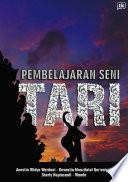
Pembelajaran Seni Tari
Salam tari, Seni tari adalah bahasa tubuh yang memukau dan mengungkapkan perasaan, cerita dan budaya. Buku ini adalah panduan komprehensif yang akan membawa pembaca melalui perjalanan yang menakjubkan dalam dunia seni tari. Dengan cakupan yang luas, buku ini cocok untuk para penar pemula, pengajar seni dan siapapun yang ingin mendalami pembelajaran seni tari. Buku ini akan membantu pembaca merasaan keindahan, kekuatan dan kedalaman seni tari. Dengan panduan ini, pembaca dapat mengungkapkan diri, mengeksplorasi budaya dan merayakan keberagaman melalui gerakan tari. Selamat membaca dan selamat menari!
- ISBN 13 : 6238215631
- ISBN 10 : 9786238215638
- Judul : Pembelajaran Seni Tari
- Pengarang : Anestia Widya Wardani, Desnatia Munzilatul Qur'aniyah, Sherly Nopiasanti, Wanda,
- Kategori : Performing Arts
- Penerbit : CV. Tatakata Grafika
- Bahasa : id
- Tahun : 2023
- Halaman : 93
- Google Book : https://play.google.com/store/books/details?id=ylroEAAAQBAJ&source=gbs_api
-
Ketersediaan :
Dengan cakupan yang luas, buku ini cocok untuk para penar pemula, pengajar seni dan siapapun yang ingin mendalami pembelajaran seni tari. Buku ini akan membantu pembaca merasaan keindahan, kekuatan dan kedalaman seni tari.









